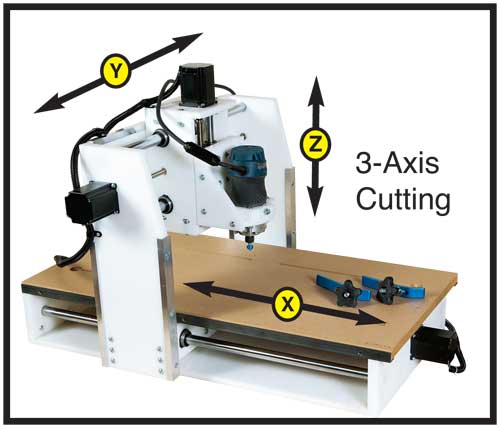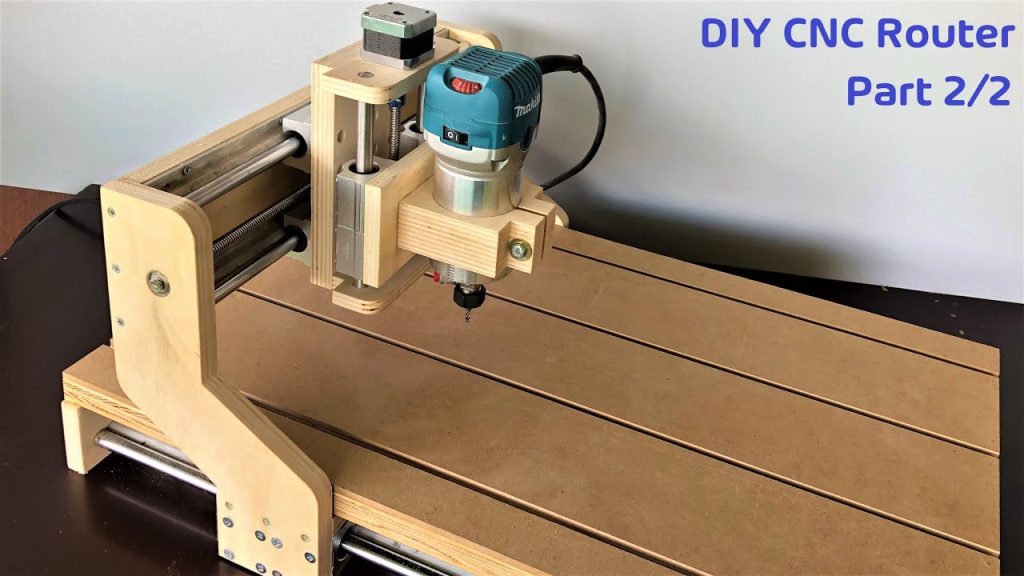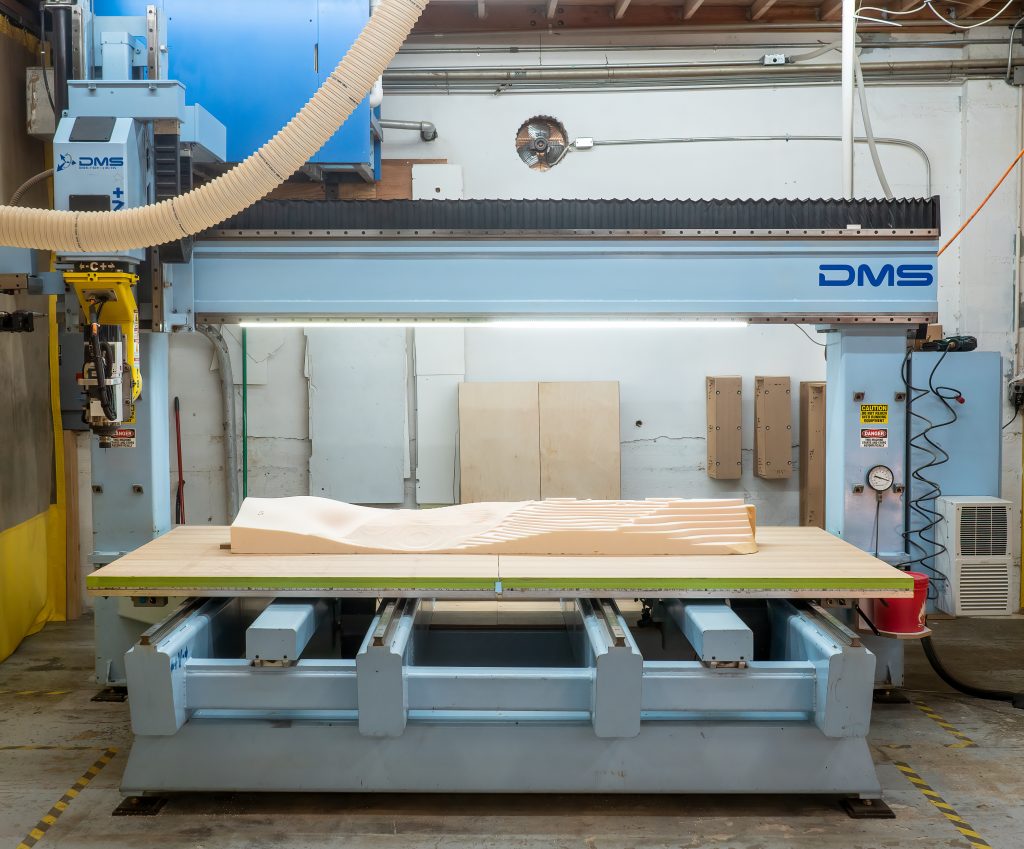Table of Contents
Paragraph 1: Are you looking to take your woodworking skills to the next level? Do you want to create intricate designs and patterns with ease? Building your own CNC router may be just the solution you need! With a bit of technical know-how and some dedication, you can construct a high-quality machine that will revolutionize your woodworking projects.
Paragraph 2: In this guide, we will provide you with step-by-step instructions on how to build a CNC router from scratch. We will cover everything from selecting the right parts and tools to assembling the machine and calibrating it for optimal performance. Whether you are a seasoned woodworker or a beginner, this guide will help you create a CNC router that is tailored to your needs and budget. So, roll up your sleeves, and let’s get started!
- Design the machine using CAD software.
- Gather materials including aluminum extrusions, linear rails, and stepper motors.
- Assemble the frame and mount the rails.
- Install and wire the motors and controller.
- Connect the machine to a computer and install the necessary software.
- Calibrate the machine and start cutting!
Building a CNC Router From Scratch: A Comprehensive Guide
Are you looking to build a CNC router from scratch? While it may seem like a daunting task, it is a rewarding experience that can save you a significant amount of money. In this guide, we will cover everything you need to know to build a CNC router from scratch, including the materials you need, the tools required, and the step-by-step process to build your own CNC router.
Materials Required
The first step in building a CNC router from scratch is to gather all the necessary materials. Here is a list of materials required to build a basic CNC router:
1. Frame Material: The frame is the backbone of the CNC router, and it is essential to choose a sturdy material that can withstand the weight of the router. Aluminum, steel, and wood are popular choices for the frame material.
2. Motors: The motors are responsible for powering the CNC router, and they need to be strong enough to handle the weight of the router. Stepper motors are the most popular choice for CNC routers.
3. Spindle: The spindle is the cutting tool that is used to carve out the design on the material. It is essential to choose a spindle with enough power to cut through the material you plan to use.
4. Electronics: The electronics are the brain of the CNC router, and they control the movement of the machine. You will need a controller board, power supply, and wiring to connect all the components.
5. Other materials: You will also need belts, pulleys, bearings, threaded rods, and other small components to build your CNC router.
Tools Required
In addition to the materials, you will also need specific tools to build your CNC router. Here is a list of tools required to build a basic CNC router:
1. Power Tools: You will need a drill, saw, and router to cut and shape the material.
2. Hand Tools: You will need a variety of hand tools, including screwdrivers, pliers, wrenches, and Allen keys.
3. Measuring Tools: You will need measuring tools such as a tape measure, calipers, and a square to ensure that your CNC router is accurate.
4. Safety Equipment: You will need safety equipment such as goggles, gloves, and dust masks to protect yourself while building your CNC router.
Step-by-Step Process
Now that you have gathered all the necessary materials and tools, it is time to start building your CNC router. Here is a step-by-step process to build your own CNC router:
1. Design the Frame: Use a CAD software to design the frame of your CNC router. Once you have designed the frame, cut the pieces to size using a saw.
2. Assemble the Frame: Once you have cut the pieces, use screws or bolts to assemble the frame.
3. Install the Motors: Install the stepper motors on the frame using brackets and screws.
4. Install the Spindle: Install the spindle on the frame using a mounting bracket.
5. Install the Electronics: Install the controller board, power supply, and wiring on the frame.
6. Connect the Motors and Electronics: Use belts, pulleys, and threaded rods to connect the motors to the electronics.
7. Test the CNC Router: Once you have connected all the components, test the CNC router to ensure that it is working correctly.
8. Install the Software: Install the software on your computer that will control the CNC router.
9. Start Cutting: Load the design file into the software, and start cutting your material.
10. Maintain the CNC Router: Regularly maintain your CNC router to ensure that it is functioning correctly.
Benefits of Building a CNC Router From Scratch
Building a CNC router from scratch has several benefits, including:
1. Cost Savings: Building a CNC router from scratch can save you a significant amount of money compared to buying a pre-built machine.
2. Customization: Building your own CNC router allows you to customize it to your specific needs and preferences.
3. Learning Experience: Building a CNC router from scratch is a rewarding experience that can help you learn new skills.
4. Business Opportunity: If you are interested in starting a business, building and selling CNC routers can be a profitable venture.
Conclusion
Building a CNC router from scratch is a challenging yet rewarding experience that can save you money and provide customization options. By following the step-by-step process outlined in this guide, you can build your own CNC router from scratch and enjoy the benefits of having a personalized machine.
Frequently Asked Questions
Building your own CNC router from scratch can be a challenging yet fulfilling task. Here are some common questions and answers to help guide you through the process:
What materials do I need to build a CNC router from scratch?
There are several materials that you will need to build a CNC router from scratch. The main components include a frame, stepper motors, a control board, a spindle, linear rails, and a power supply. You will also need various tools such as a drill, a saw, and a soldering iron. It is important to choose high-quality materials to ensure the longevity and functionality of your CNC router.
It is recommended to research online and find a detailed guide to help you determine the exact materials you will need, as well as the specific measurements and dimensions for each component.
What software do I need to operate a CNC router?
There are several software options available for operating a CNC router. Some popular choices include Mach3, GRBL, and LinuxCNC. It is important to choose a software that is compatible with your control board and provides the necessary features for your specific project. Many software options offer free trials or demos, allowing you to test them out before purchasing.
It is also important to have a basic understanding of CAD (Computer-Aided Design) software to design your projects and generate the necessary G-code for your CNC router to follow.
What is the cost of building a CNC router from scratch?
The cost of building a CNC router from scratch can vary depending on the quality of the materials used and the specific components chosen. In general, it can cost anywhere from a few hundred to several thousand dollars. It is important to create a budget and research the cost of each component before making any purchases. It may also be beneficial to consider purchasing used components or building your CNC router in stages to spread out the cost.
Although building a CNC router from scratch can be costly, it can also save you money in the long run by allowing you to create your own custom projects and avoid the cost of outsourcing your work.
What are the benefits of building a CNC router from scratch?
Building a CNC router from scratch offers several benefits. Firstly, it allows you to customize the machine to fit your specific needs and requirements. This can include the size and shape of the machine, as well as the specific components used. Additionally, building a CNC router from scratch can be a great learning experience, allowing you to gain a deeper understanding of the mechanics and electronics involved in CNC routing.
Furthermore, building your own CNC router can be more cost-effective in the long run, as you can avoid the cost of outsourcing your work to other machines or services.
What are some common challenges when building a CNC router from scratch?
Building a CNC router from scratch can be a challenging process, particularly for those who are new to the world of CNC routing. Some common challenges include choosing the right components, ensuring the machine is properly calibrated, and troubleshooting any issues that may arise. It is important to research and understand each step of the process before beginning, as well as seeking advice from more experienced builders if needed.
Additionally, it is important to be patient and take your time when building a CNC router from scratch. Rushing through the process can lead to mistakes and problems down the line, ultimately affecting the functionality of your machine.
In conclusion, building a CNC router from scratch may seem like a daunting task, but with the right tools and guidance, it can be a rewarding experience. Not only will you have a custom machine that fits your specific needs, but you will also have gained valuable knowledge and skills in the process.
By following the steps outlined in this guide, you will be able to source the necessary materials, design and assemble the frame, and install the necessary electronics to bring your CNC router to life. Whether you’re looking to create intricate wood carvings or precision metal parts, your new machine will provide endless possibilities for creativity and productivity.
So why wait? Start building your own CNC router today and unlock the potential for limitless innovation and craftsmanship. With patience, dedication, and a willingness to learn, you can achieve the satisfaction of creating something truly unique and valuable.
Request a quote today!
[contact-form-7 id="1578" title="Contact form"]
Please compress the file into a ZIP or RAR file before uploading. Alternatively, send through your RFQ by email.
enquires@unitymanufacture.com





